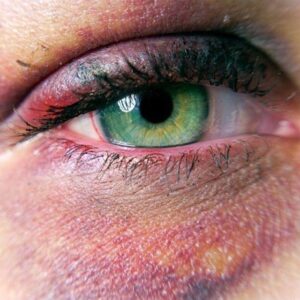
Anushka Super Speciality Eye Hospital
Call: 90044 44422 / 99213 44422 | Timings : 8.30 a.m to 5.30 p.m (Mon-Sat) | Add: Shri Swami Samarth Soc, Kaneri Dhamankar Naka, Bhiwandi




Accredited for Quality Care
Protecting Eyes from Seasonal Allergies: A Complete Guide
anushka
29 September 2025
Every year, just when the season changes—be it spring, monsoon, or even autumn—you’ll find many people complaining: “Doctor, my eyes are red, itchy, watery. Is it an infection?” Most of the time, it’s not an infection at all. It’s seasonal allergy.
In India, allergic eye problems are super common. Dust, pollen, smoke, pollution, change in weather—all these trigger allergies. And honestly, it can be really annoying. Eyes feel like they’re burning, kids keep rubbing them, and parents panic thinking it’s “eye flu.”
So in this blog, let’s talk about what seasonal eye allergies are, why they happen, how to tell them apart from infection, and most importantly—how to protect your eyes during allergy season.
What Are Seasonal Eye Allergies?
Doctors call it allergic conjunctivitis. “Conjunctiva” is the thin transparent layer that covers the white part of your eye. In allergies, this layer gets inflamed.
It’s the body’s way of overreacting to something harmless like dust or pollen. Your immune system sees it as a danger, releases histamine, and bam—red, itchy eyes.
It’s not contagious. You can’t catch it like you catch viral conjunctivitis (eye flu). But yes, it keeps coming back with weather changes.
Common Symptoms
- Itching (the most typical sign)
- Redness (bloodshot eyes)
- Watery or teary eyes
- Burning or irritation
- Swelling of eyelids (sometimes)
- Stringy discharge (not pus, just mucus-like)
- Sneezing or nasal allergy often happens together
One simple tip: If itching is the main problem, it’s usually allergy. If pain and pus are there, it’s probably infection.
Types of Eye Allergies
- Seasonal Allergic Conjunctivitis (SAC): Happens in certain seasons, like spring or harvest time when pollen is high.
- Perennial Allergic Conjunctivitis (PAC): Lasts all year round, usually due to dust mites, pets, or indoor allergens.
- Vernal Keratoconjunctivitis (VKC): Common in Indian children, especially boys. Severe itching, thick mucus, and can sometimes affect the cornea. Needs proper treatment.
- Atopic Keratoconjunctivitis (AKC): More chronic, usually linked with skin allergy (eczema, dermatitis).
Why Are They So Common in India?
- Dust and pollution: Our cities are full of them.
- Burning of crops, smoke: Especially during seasonal changes.
- Pollen from trees and plants: Certain months are heavy with pollen.
- Hot, dry climate: Increases irritation.
- Genetics: Families with history of asthma, eczema, or nasal allergy often have kids with eye allergy too.
How to Protect Your Eyes During Allergy Season
1. Avoid the Triggers
Sounds obvious, but it’s the first step. If you know pollen or dust triggers your allergy, try to reduce exposure.
- Wear sunglasses when outdoors to block dust and pollen.
- Keep windows closed on high-pollen days.
- Wash your face and eyes with clean water after coming from outside.
- Avoid rubbing eyes—it only makes itching worse.
2. Maintain Eye Hygiene
- Use cold compress (clean cloth dipped in chilled water) to soothe itching.
- Wash pillow covers, bedsheets, and curtains regularly to reduce dust mites.
- Avoid sharing towels or handkerchiefs.
3. Use Lubricating Eye Drops
Artificial tears (non-medicated) can wash out allergens and give relief. In India, you’ll find many over-the-counter brands. But use preservative-free drops if possible, especially for children.
4. Medicines from Doctor
If symptoms are strong, ophthalmologists usually prescribe:
- Antihistamine eye drops (reduce itching)
- Mast cell stabilizer drops (prevent future reactions)
- Combination drops (work faster, used in seasonal cases)
- Steroid drops (only for severe cases like VKC, must be under strict doctor supervision)
Never self-medicate with steroid drops—they can cause glaucoma or cataract if misused.
5. Take Care of Nose & Skin Too
Eye allergy rarely comes alone. Many patients also have allergic rhinitis (sneezing, runny nose) or skin allergy. Treating nose allergy often improves eye symptoms too.
Diet & Lifestyle Tips
- Omega-3 rich foods like flax seeds, walnuts, and fish help reduce inflammation.
- Vitamin C (amla, oranges, lemon) boosts immunity.
- Drink enough water—hydrated eyes are less irritated.
- Encourage kids to play outdoors, but avoid peak pollen hours (early morning, windy evenings).
Children and Seasonal Eye Allergy
In India, vernal keratoconjunctivitis (VKC) is common in kids aged 5–15 years. Parents often mistake it for infection. Signs include constant eye rubbing, thick mucus discharge, and sometimes small whitish bumps inside the eyelid.
Why it matters? If ignored, VKC can damage the cornea and affect vision. So parents should never delay check-up if the child has persistent eye itching.

Difference Between Allergy and Eye Flu
- Allergy: Itching, watery eyes, both eyes usually affected, no fever, not contagious.
- Viral eye flu: Pain, sticky discharge, one eye then the other, spreads to family members.
This confusion is very common, especially in monsoon. Knowing the difference saves unnecessary worry.
Quick Home Remedies (Safe Ones)
- Cold compress – instant relief from itching.
- Rose water – some people use it, but make sure it’s pure and preservative-free.
- Splashing plain water – helps wash out allergens.
(But avoid putting random kitchen items like honey or milk in eyes—common practice in villages but dangerous.)
When to See a Doctor
- If redness and itching don’t settle in 3–4 days
- If vision becomes blurry
- If child has constant eye rubbing with thick discharge
- If over-the-counter drops don’t work
- If eyelid swelling is severe
Prevention Checklist
- Wear sunglasses outdoors
- Wash face after exposure
- Don’t rub eyes
- Keep bedding clean
- Avoid high-pollen times
- Use lubricating drops
Final Words
Seasonal eye allergies are irritating, but not dangerous if managed properly. The key is prevention and timely treatment. Most cases improve with simple measures like avoiding dust, washing eyes, and using lubricating drops. For severe allergies, proper medicines from an eye specialist are a must.
So next time your eyes start itching during a seasonal change, don’t panic thinking it’s eye flu. It might just be allergy. Protect them, rest them, and they’ll be fine.
Recent Posts


